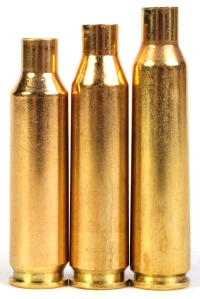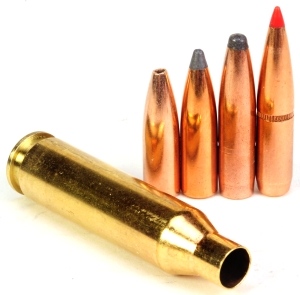
“Someone’s got it in for me, they’re planting stories in the press.
Whoever it is, I wish they’d cut it out, but when they will, I can only guess.
They say I shot a man named Gray and took his wife to Italy.
She inherited a million bucks, and when she died it came to me.
I can’t help it if I’m lucky”. – A few lines from Bob Dylan’s “Idiot Wind”
I know the story behind the song, but I can’t help thinking these lines also make an excellent grifters’ anthem. Words are funny things. Writers know their meanings and intentions when assembled as more complete thoughts, but it’s anybody’s guess how they will be read. So I thought I would write this review in verse in an effort to attain greater clarity…
Ode to a 260 Remington…
The 260 Remington
is pretty spiffy.
For hunting moose,
it may be,
a little bit iffy.
For deer and hogs
it’s a stopper,
and for bear also,
except for a whopper.
Its modest case size
keeps reloading cost low.
While not a barn burner,
I wouldn’t call it slow.
What does
the 260 Remington
mean to me?
A consummate deer cartridge,
with great accuracy.
OK, what’s really going on?
Between the covers of the new Hornady #8, for some reason or other, the 6.5 Creedmoor is credited with a slightly higher level of performance than the 260 Remington. The listing is such a stretch to advance the Creedmoor, that Hornady breaks with their own forever tradition of whole hundred foot per second velocity increments and uses a twenty five foot per second increment for the Creedmoor. Honestly, I’m not sure how they got there because, in order of measured case capacity, the popular 6.5’s are the 6.5×55 Swede 58.0 grains, the 260 Remington 53.5 grains and the 6.5 Creedmoor 52.3 grains. The Remington holds slightly more than one grain of powder edge over the Creedmoor. Additionally, both the Creedmoor and Remington round have a pressure ceiling of 60,191 PSI. I couldn’t find the Creedmoor edge in my own handloads, regardless the data source used.
 There was no attempt to configure or position the Remington
There was no attempt to configure or position the Remington Model Seven, pictured right, as a long range shooter, or to extract the long range potential from heavy for bore, high ballistic coefficient 0.264″ bullets. The Model Seven is a lightweight short barreled gun, so reloading attention was focused more on getting the most out of the round in concert with a 20″ barrel gun. Powder speed was kept below the slow burners, but as close to filled cases as possible.
Model Seven, pictured right, as a long range shooter, or to extract the long range potential from heavy for bore, high ballistic coefficient 0.264″ bullets. The Model Seven is a lightweight short barreled gun, so reloading attention was focused more on getting the most out of the round in concert with a 20″ barrel gun. Powder speed was kept below the slow burners, but as close to filled cases as possible.
Handloads were limited to a maximum of 140 grains, skipping the bore’s 160 grain top weight. The 6.5mm’s 140 grain bullets have a higher sectional density than the popular 7mm-08 Remington 140 grain bullet. A 6.5mm 120 grain bullet from the 260 Remington, for all intent and purposes, moves at about the same speed as it would from a significantly larger cased 25-06 Remington. The 260 Remington out performs the standard, improved and high pressure version of the 257 Roberts; equal barrel length and comparable bullet weights.
Say something interesting, Joe. OK, “Something Interesting”

| Bullet | Mfg # | Weight Grains |
Length Inches |
COL |
| Sierra Varminter | 1710 | 100 | 0.935 | 2.710 |
| Sierra Pro-Hunter | 1720 | 120 | 1.092 | 2.765 |
| Privi | B264SP | 139 | 1.200 | 2.800 |
| Hornady SST | 26302 | 140 | 1.400 | 2.775 |
|
Maximum COL for the 260 Remington is 2.800″ |
||||
The four bullets selected are representative of the useful range of weights and bullet types that work well for the 260 Remington. The Seven action doesn’t have quite the latitude of the Model 700 short action when it comes to maximum COL limitations, but more than enough to work within the cartridge’s specification for COL. Both the Privi and Hornady have cannelure grooves and these were used when establishing seating depth.
|
||||||||||||||||||||||||||||||||||||||||||||||||||||||||||||||||||||||||||||||||
The loads listed left, are close if not at maximum. With the exception of the Re19 loads, completeness of burn is above the high 98% level. There were no signs of excessive pressure and all of the rounds chambered without interference at the noted cartridge overall lengths. The most well-mannered and one I would select as a primary hunting bullet for deer is the 120 grain Sierra Pro-Hunter.
Conclusion
I think I would have to classify the 260 Remington as a deceptively powerful cartridge. I guess the 0.264″ bullet, parked between the 0.243″ and 0.284″ bullets probably should make a lot of sense from any and all appearances. The point that is not so obvious is how well the 260 Remington holds onto downrange velocity as a function of ballistic coefficient and sectional density. The following is a run off the Real Guns External Ballistics calculator with the 120 Grain Sierra bullet selected. I used 6″ as the critical target diameter –
| 6″ Kill Zone – 241 Yard Zero – 282 Yards Point Blank Range | |||||||
| Range -yds | 0 | 50 | 100 | 150 | 200 | 250 | 300 |
| Velocity – ft./sec. | 2936 | 2804 | 2675 | 2549 | 2428 | 2310 | 2195 |
| Energy – ft.-lbs. | 2296 | 2094 | 1906 | 1731 | 1570 | 1421 | 1284 |
| Path – in. | -1.5 | 1.1 | 2.6 | 3.0 | 1.9 | -0.6 | -4.7 |
A Model Seven in 260 Remington Part I
A Model Seven in 260 Remington Part II

Email Notification